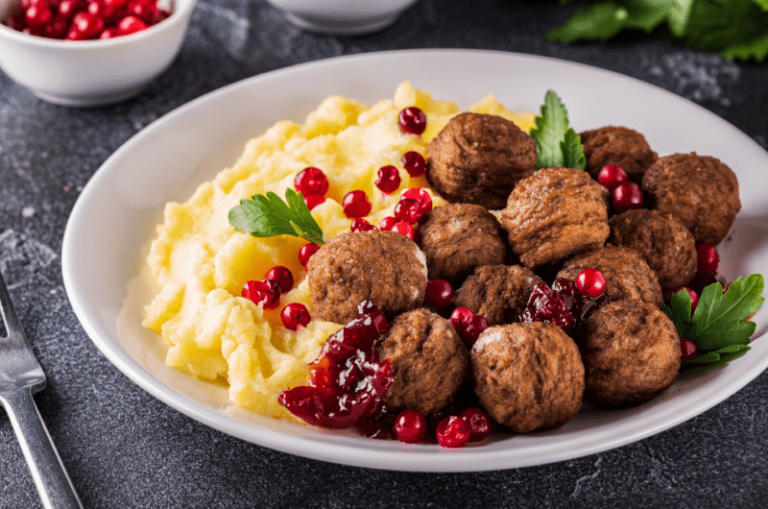Introduction: Swedish Cuisine Explained
Swedish cuisine is known for its simplicity, wholesome ingredients, and a deep-rooted connection to nature. The cuisine has evolved from a survival-based approach to food, where preservation techniques and foraging were essential to make it through harsh winters. Today, Swedish food culture is characterized by its focus on seasonality, sustainability, and local produce. The cuisine has also been influenced by neighboring countries such as Norway, Denmark, and Finland.
Fish and Seafood: A Cornerstone of Swedish Cuisine
Given the country’s long coastline and numerous lakes, it’s no surprise that fish and seafood feature prominently in Swedish cuisine. Herring, in particular, is a staple in Swedish cuisine, and is often served pickled with onions, sour cream, and potatoes. Other popular seafood dishes include smoked salmon, crayfish, and shrimp, which are often served with dill, mustard, and horseradish sauces. Fish is also used in a variety of dishes, from soups and stews to casseroles and pies.
Meatballs and Pickled Herring: Iconic Swedish Dishes
When most people think of Swedish cuisine, the first dishes that come to mind are meatballs and pickled herring. Meatballs (köttbullar) are typically made from a mixture of ground beef and pork, breadcrumbs, milk, and spices such as allspice and nutmeg. They are often served with lingonberry sauce, potatoes, and pickled cucumbers. Pickled herring (sill) is another classic Swedish dish that is often served during festive occasions such as Christmas and Midsummer. The herring is pickled in vinegar, sugar, and spices, and is usually served with boiled potatoes, crispbread, and sour cream.
Bread and Pastries: A Swedish Love Affair
Sweden has a strong tradition of baking, and bread and pastries are an important part of Swedish cuisine. Rye bread (limpa) and crispbread (knäckebröd) are popular breads in Sweden, and are often served with butter, cheese, and herring. Pastries such as cinnamon buns (kanelbullar), cardamom buns (kardemummabullar), and semlor (sweet buns filled with almond paste and whipped cream) are also beloved by Swedes and are often consumed with coffee or hot chocolate.
Dairy Products: The Backbone of Swedish Cooking
Dairy products such as milk, cream, butter, and cheese are essential ingredients in Swedish cuisine. Dairy is often used to add richness and flavor to dishes such as soups, sauces, and stews. Cheese is also an important part of Swedish cuisine, with varieties such as Västerbotten, Prästost, and Grevé being popular. Dairy products are also used in desserts such as pannkakor (Swedish pancakes) and ostkaka (a baked cheese dessert).
Foraging and Seasonal Eating: Embracing Nature’s Bounty
Foraging and seasonal eating are deeply ingrained in Swedish food culture. Swedish cuisine relies heavily on local, seasonal produce such as berries, mushrooms, and root vegetables. Foraged ingredients such as chanterelle mushrooms, lingonberries, and cloudberries are often used in dishes such as soups, stews, and sauces. Swedes also have a tradition of smörgåsbord, which is a buffet-style meal that features a variety of hot and cold dishes, including pickled vegetables, cured meats, and seafood. The dishes are often served on a table lined with different types of breads and crackers, and guests are encouraged to help themselves to whatever they like.

